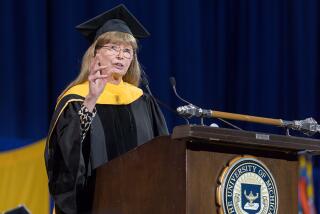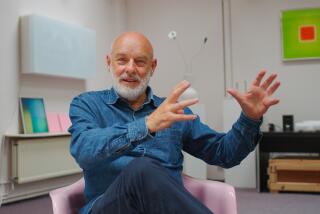INVENTORS AT WORK Interviews with 16 Notable...
- Share via
INVENTORS AT WORK Interviews with 16 Notable American Inventors by Kenneth A. Brown (Microsoft Press, 16011 N.E. 36th Way, Box 97017, Redmond, Washington 98073-9717: $17.95).
Inventors, long seen as eccentric, garage-dwelling hobbyists, are more under-appreciated than ever now that inventions are purchased by corporations and renamed by marketing experts before they meet the public eye. And yet the solitary inventor is still invaluable, for as these interviews show, no amount of corporate planning can substitute for the new ways of thinking nurtured through individual inspiration. As James Burke says in the introduction to this book: “Inventors have a unique ability among a species already unique: they can add one and one to make three.” Successful inventions, most of these inventors believe, must spring from free thought, unfettered by market demands. As Steve Wozniak, co-founder of Apple Computers, puts it, “(If I had realized that) the industry would become as big as it is today . . . we probably would have made the wrong decisions technically and built the wrong product.” In contrast, Maxime Faget, the mastermind behind most of NASA’s major space projects, says he isn’t an inventor because his creations were commissioned.
Agreement on what encourages innovation ends here, however. Bob Grundlach, inventor of the multicopying process that helped launch Xerox, tells Kenneth Brown that optimism is most important: “Many things can go wrong, but I tend to focus on the things that can go right.” Faget, on the other hand, is always worrying about what can go wrong. As the Mercury capsules descended to Earth, he would shake his head at the excited crowds, “Don’t cheer yet,” he wanted to say, “Wait until it’s in the water!” NASA has forgotten that failure is a prerequisite for progress, Faget suggests in one of the book’s most engaging interviews. While he believes the Challenger disaster “should not have happened” (It blew up, he says, as a result of “something that had been thought about and then passed over”), he feels “we shouldn’t shut everything down for a couple of years and put our tails between our legs and hide. (In the program’s early days) We . . . learned what was wrong as well as what was right. Now, we only allow ourselves to learn what’s right.”
More to Read
Sign up for our Book Club newsletter
Get the latest news, events and more from the Los Angeles Times Book Club, and help us get L.A. reading and talking.
You may occasionally receive promotional content from the Los Angeles Times.









